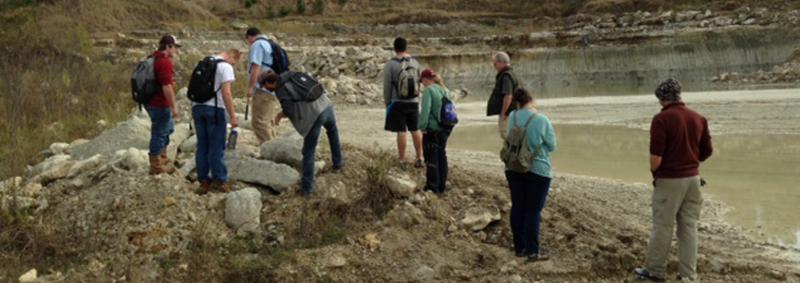
The Principles of Paleobiology Class Field Excursion
Geosciences students search for fossils at the Smith County Lime Pit.
Dr. Clary's GG 4203 Principles of Paleobiology students visited the Smith County Lime Pit to collect fossils for their paleoenvironmental projects in November. Serving as the field excursion's guest leader was the Mississippi Museum of Natural Sciences' Curator of Paleontology, George Phillips.
The Smith County Lime Pit is located in Oligocene strata, with three different formations exposed. The pit is currently mined for agricultural lime, but yielded numerous invertebrate fossils for the students. Common finds included crustaceans, echinoids, foraminifera, and bivalve mollusks.
Top Photo: Mr. George Phillips, third from right, instructs Paleobiology students in the stratigraphy of the Smith County Lime Pit site.